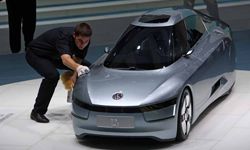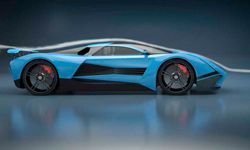They said it couldn't be done: No one could make a car capable of traveling 100 miles (160.9 kilometers) or more on a single gallon (3.8 liters) of gasoline -- or achieve the equivalent performance using any other type of fuel.
And if someone did manage to build such a vehicle, certainly it wouldn't be fast, nimble or crashworthy. But even if you gave such automotive fantasies the benefit of the doubt, there was just no way a vehicle that managed to accomplish all that could also be roomy. Comfort would have to be sacrificed at the altar of motoring efficiency. Or so it once seemed.
Advertisement
It just so happens that all those doubts -- held by more than a few automotive "experts" at one time -- turned out to be wrong. In all fairness, given the technology available until recently, those arguments made sense. But efforts to rethink and re-engineer the automobile in the past couple decades are transforming formerly fantastic ideas into feasible ones.
Amory Lovins, founder and chief scientist of the Rocky Mountain Institute (RMI), coined the name "Hypercar" to describe his concept for a spacious, SUV-like vehicle that delivered astonishing fuel economy without making any of the compromises people typically attach to "economy" cars. RMI's Hypercar vision first entered the public arena in the 1990s. A firm, Hypercar Inc., spun off from the RMI research (today Hypercar Inc. is called FiberForge) to run with the concept.
In the years that followed, the "hypercar" definition expanded to mean any extremely efficient motorized ground vehicle. The main, yet somewhat loose, parameter is that the vehicle be able to travel 100 miles (160.9 kilometers) or more on the energy equivalent of a gallon (3.8 liters) of gasoline. For the electric energy wonks, that's the same as 100 miles (160.9 kilometers) for every 33.7 kilowatt hours of energy. To put that in perspective, we're talking about the amount of power it would take to keep a 100-watt light bulb lit 10 hours a day (1-kilowatt, or kWh), for a month. (This article explains in more detail how efficiency comparisons between gasoline and electric motors work.)
So what's not to like about hypercars? We're hard-pressed to think of many reasons, other than they've been such a long time in coming for regular folks. By 2012, it was still nearly impossible for an average-income person to walk into an automotive showroom and drive out with the keys and registration to a street-legal hypercar. Yes, GM's Chevy Volt carries an efficiency rating of just under 100 MPGe, but at $40,000 a copy, one could argue it's still out of reach for most would-be car buyers.
Still, we can drool over...er, extol the virtues of the hypercar as an idea and as an emerging class of vehicles that are available today -- if you have the money (and in some cases, the technical know-how to build one). In this article we'll explore some of the most impressive qualities of the hypercar. Once you've read the article, weigh in with your thoughts -- is hypercar efficiency worth pursuing?


